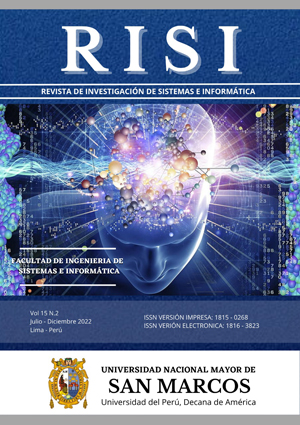Immersive learning through training games in virtual reality environments in medicine
DOI:
https://doi.org/10.15381/risi.v15i2.23836Keywords:
Virtual reality, sets training, interactivity, ability cognitive, e-learningAbstract
An exhaustive review of scientific articles registered in the following databases such as: Dialnet, Scielo, Wos and Scopus has been carried out regarding the impact of the application of virtual reality and its contributions in education, physical and psychological medicine, among others. others The objective of this article was the analysis of the scientific production between 2018 and 2022. The method used was the bibliometric analysis of the specific contributions from the analysis of their objectives, conclusions, and discussions with a qualitative synthesis of content. Great interest was identified on the part of the research community to deepen the application of this technology on its applicability to other fields of science. Production in 2020 and 2021 has progressively progressed, being considered the most prolific. The countries of the most cited publications in this work are on the European continent, who have delved into the subject and the application of the use of virtual reality in education. In the Asian and American continents, they stand out for their interest in the field of medicine, either for physical recovery therapies or support for psychological or psychiatric disorders such as ASD or IT. Virtual reality has become an innovative technology, it still has several limitations related to cost and technical complexity such as hardware and software for its development in education and medicine; however, it promotes didactic improvements in the field of motivation, creativity and significant learning.
Downloads
Downloads
Published
Issue
Section
License
Copyright (c) 2022 Dick Díaz Delgado

This work is licensed under a Creative Commons Attribution 4.0 International License.
AUTHORS RETAIN THEIR RIGHTS:
a. Authors retain their trade mark rights and patent, and also on any process or procedure described in the article.
b. Authors retain their right to share, copy, distribute, perform and publicly communicate their article (eg, to place their article in an institutional repository or publish it in a book), with an acknowledgment of its initial publication in the Revista de investigación de Sistemas e Informática.
c. Authors retain theirs right to make a subsequent publication of their work, to use the article or any part thereof (eg a compilation of his papers, lecture notes, thesis, or a book), always indicating its initial publication in the Revista de investigación de Sistemas e Informática (the originator of the work, journal, volume, number and date).


